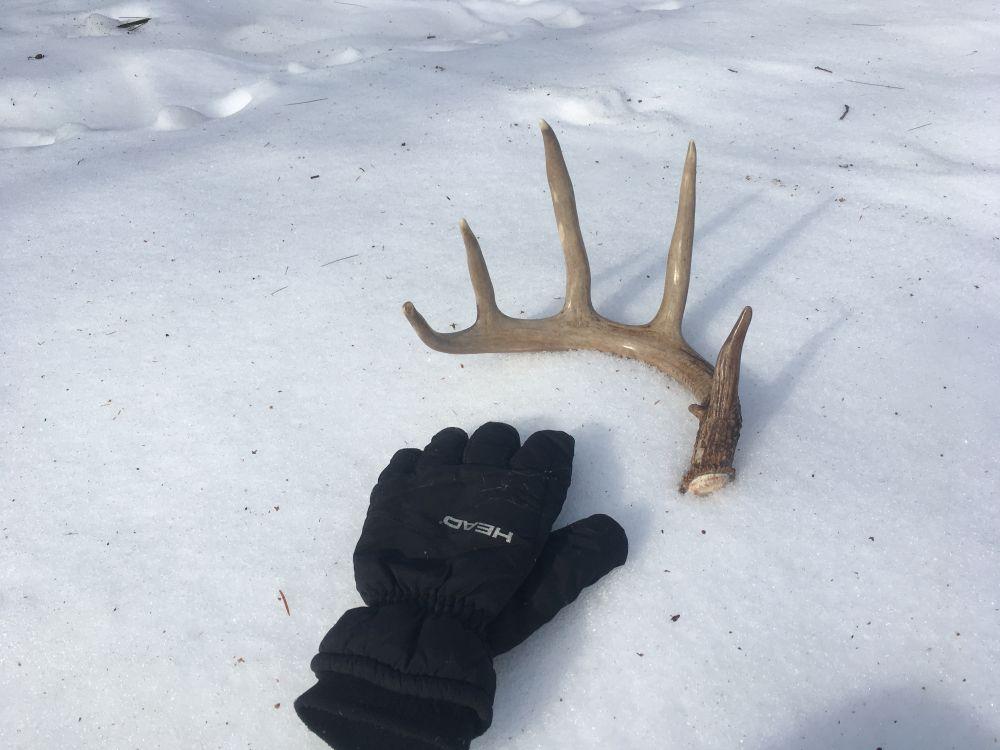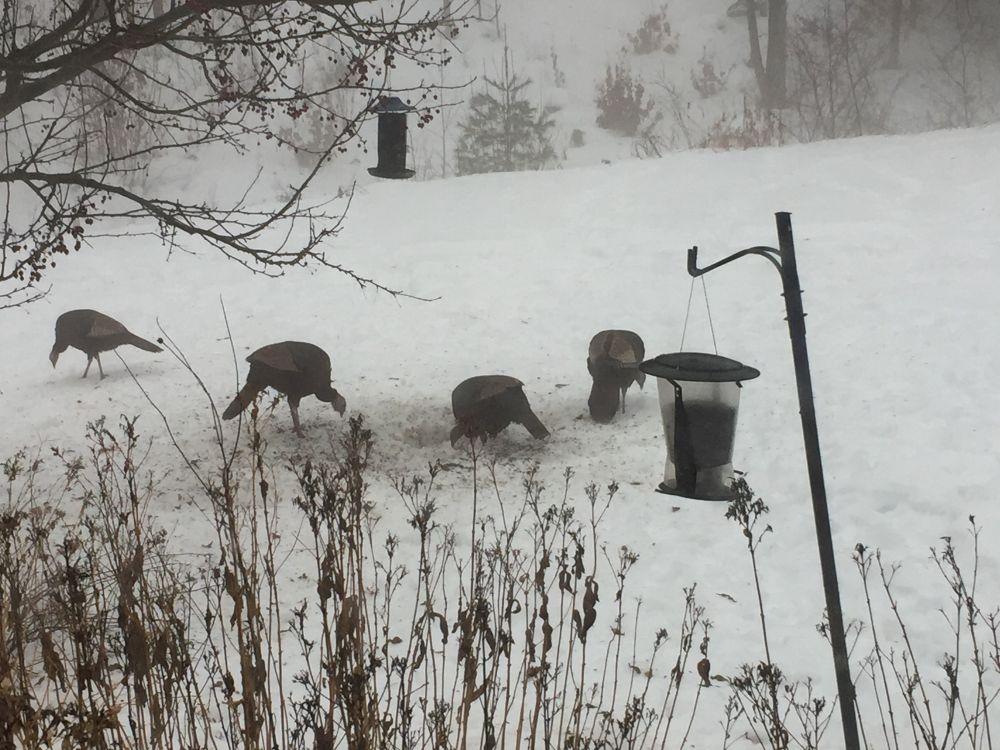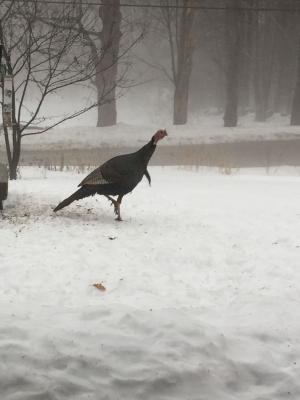When arctic temperatures relent
- Tags:
- Wildlife

Finding a shed antler is a nice prize for following deer trails during the coldest weeks of the year. Photo Brian Hotz.
When you take time to tune-in to winter bird and wildlife activity, you may perceive what many others – including meteorologists – miss in mere weather forecasts.
There are seasons within seasons. Each week brings new subtle changes as winter advances toward its mid-point, or halftime if you prefer. We’re a month past winter solstice on December 21 and closing-in on Groundhog Day: February 2. Traditionally, this was a time to check that half the winter woodpile and livestock feed remained.
The angle of the midday sun is higher and the quality of winter daylight has begun to change. It’s almost still light outside at 5 pm. As days grow longer and brighter, we experience temperatures fluctuations including winter thaws. Icicles form at eaves of homes when roof snow melts at warm midday and refreezes at night. A southwest wind and high pressure will bring us a gentle hint of things to come.
To the Thawing Wind
“Come with rain, O loud Southwester!
Bring the singer, bring the nester;
Give the buried flower a dream;
Make the settled snowbank steam…” - Robert Frost
Wishful thinking perhaps? While it’s way too early to summon birds or flowers, there are welcome signs that winter is progressing. The recent thaw which brought river flooding and ice jams also dramatically reduced the snowpack from twenty inches or more to just few inches seemingly overnight during rainy hours of snow-eating fog. With bare ground exposed, wildlife hunkered down during prior weeks of arctic temperatures and deeper snow began to move.
The deer began moving along packed trails in the reduced snowpack. They ventured downhill at dusk, leaving the shelter of thick hemlocks to visit the orchard and frozen vegetable gardens. They pawed-up frozen apples and leftover broccoli and kale from beneath the snow. Bucks shed their antlers earlier in January in response to plunging testosterone following the November and December breeding season called the “rut.” For a few days in January, lopsided bucks sport one antler remaining attached. Finding a shed antler is a nice prize for following deer trails during the coldest weeks of the year. A colleague found half a ten-point buck’s rack lying on the snow beneath his backyard apple tree.

Birds and wildlife measure changing seasons less by weather and temperature and more by subtle changes in daylight that trigger hormones. The changes precede a switch from early- to mid-winter activity including the onset of pre-breeding for winter resident birds and fur-bearing mammals.
By late January, barred owls and great horned owls have begun setting up nesting territories utilizing hollow tree cavities or renovating woodland hawk nests and even unused great blue heron nests perched in dead snag trees above frozen wetlands. Owls time-share nest sites with birds that will not return until May.
The general level of backyard bird activity is now increasing. Hairy, Downey and Red-bellied woodpeckers resume drumming to attract mates. Juncos, goldfinches, nuthatches, cardinals and jays are more active at feeders. Twitter traffic – in the original sense – is increasing. Chickadees sing their diagnostic two-note “spring’s here” song and tufted titmice sing “peter-peter.” During the thaw, turkeys left the deep forest and moved to neighborhoods with backyard birdfeeders. Small flocks of female hens and scattered male jakes sporting chest beards appeared for the first time since autumn on our tree farm. Turkeys visit wetlands to strip spores from the dried fertile spikes of Sensitive fern remaining above the snow.

There is a mid-winter uptick in tracks of mammals active during the January thaw. Rodents including gray squirrels and mice breed in February. With a lull in snowstorms and bitter cold, predators break out of their confinement – foxes, coyotes and bobcats are now on the move after being snowed-in. Mid-February to early March is peak breeding season for New Hampshire fur-bearers: bobcats, coyotes, foxes, fishers, otters and smaller weasel family members: mink and ermine begin scouting for mates. We’ll soon spy fox and coyote tracks outside the hen house as they inspect fences and hatches, checking for any opportunity for a chicken dinner. Raccoon and skunk tracks also magically appear during thawing weather. Want to learn about predators? Start by keeping a few backyard chickens!
With weekend temperatures in the mid-forties and six consecutive days above freezing in the forecast and nights in the balmy twenties, the shift is on. Despite weeks of winter remaining on the calendar, the second half brings momentum. The changes in daylight, bird and wildlife activity make spring seem a little closer each week.
At least that’s how I will console myself when the next blast of arctic air and heavy snow arrives.
